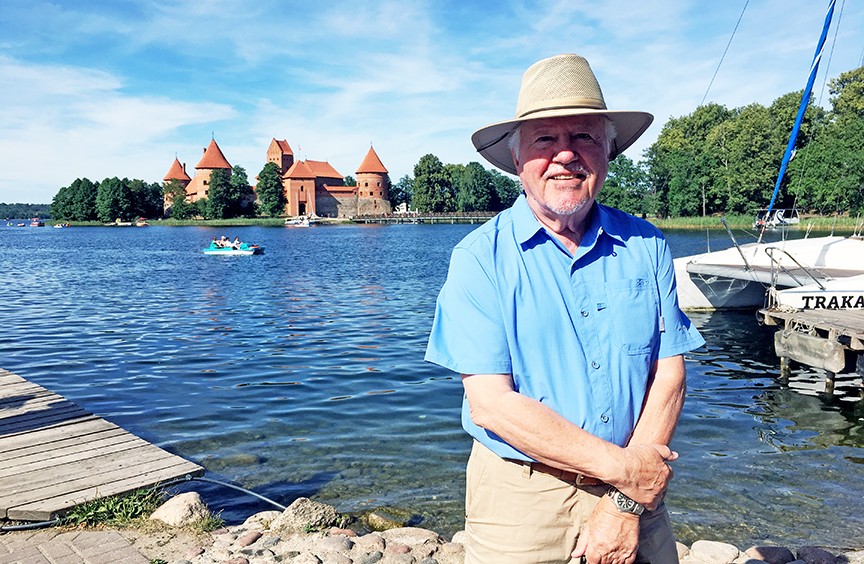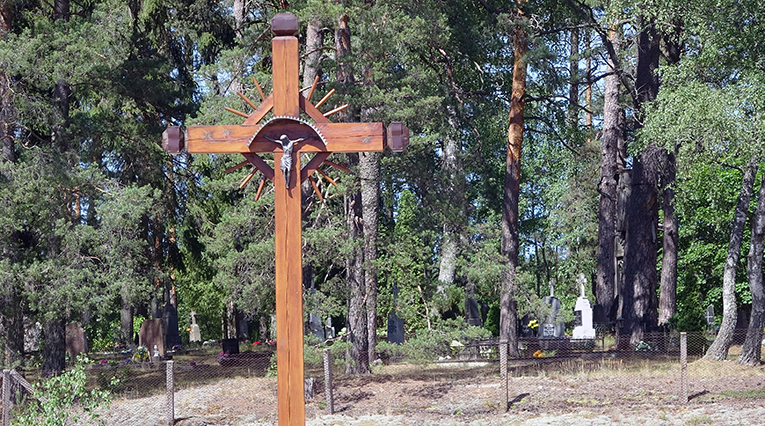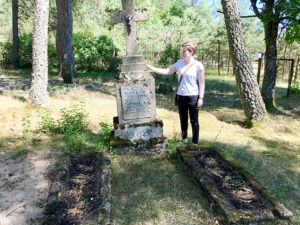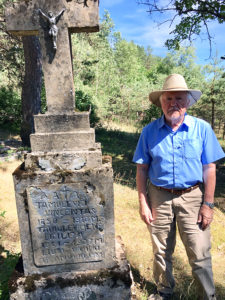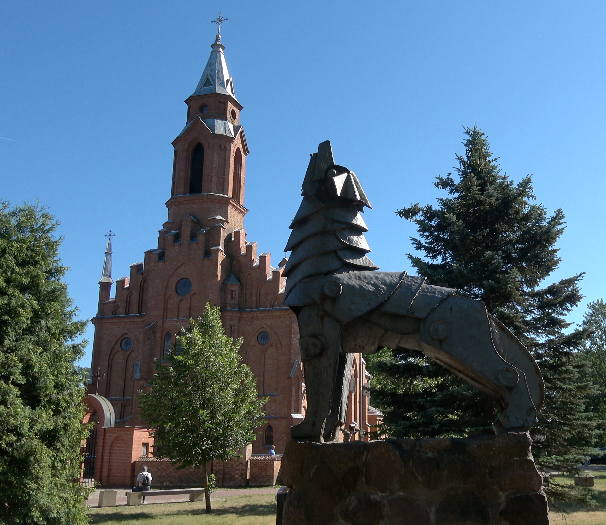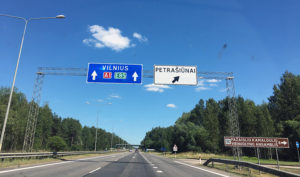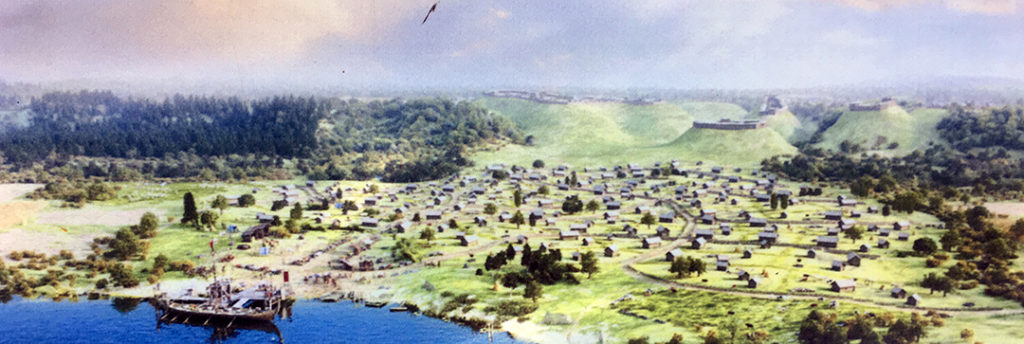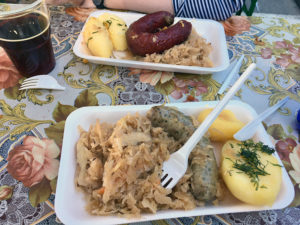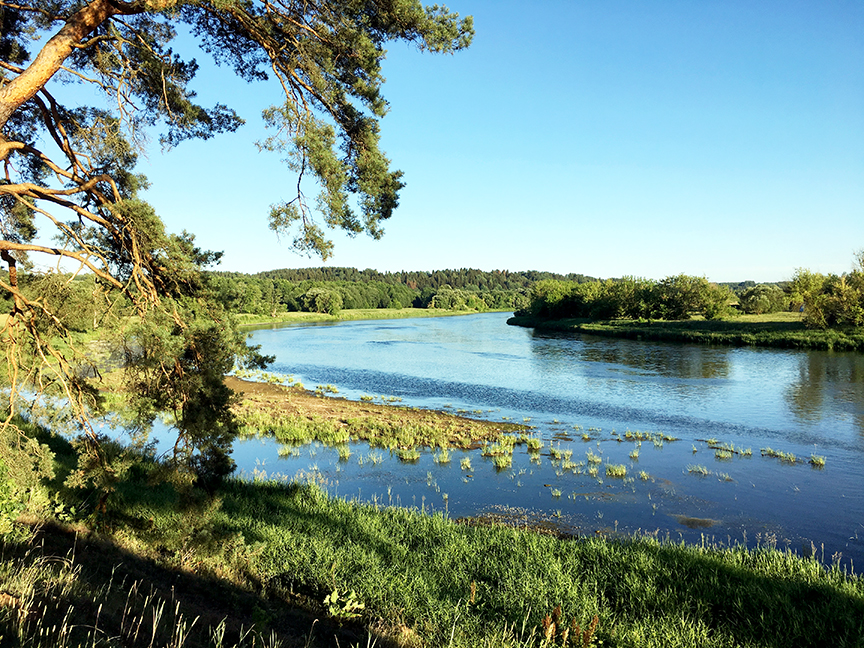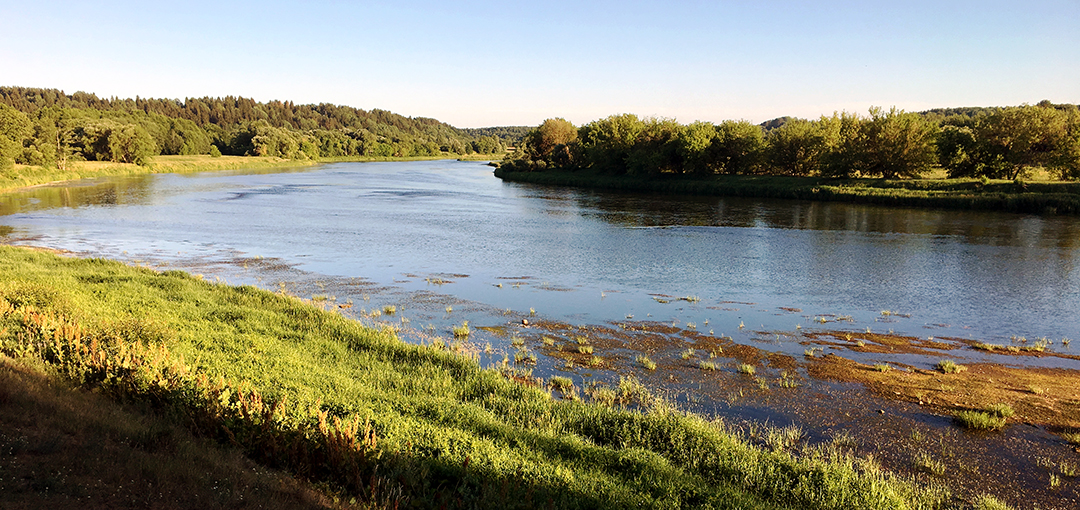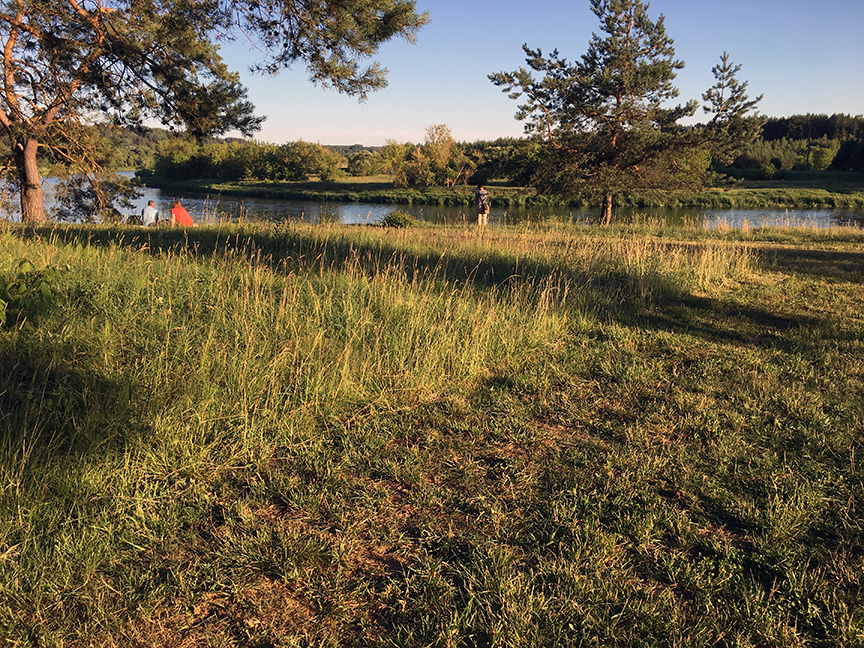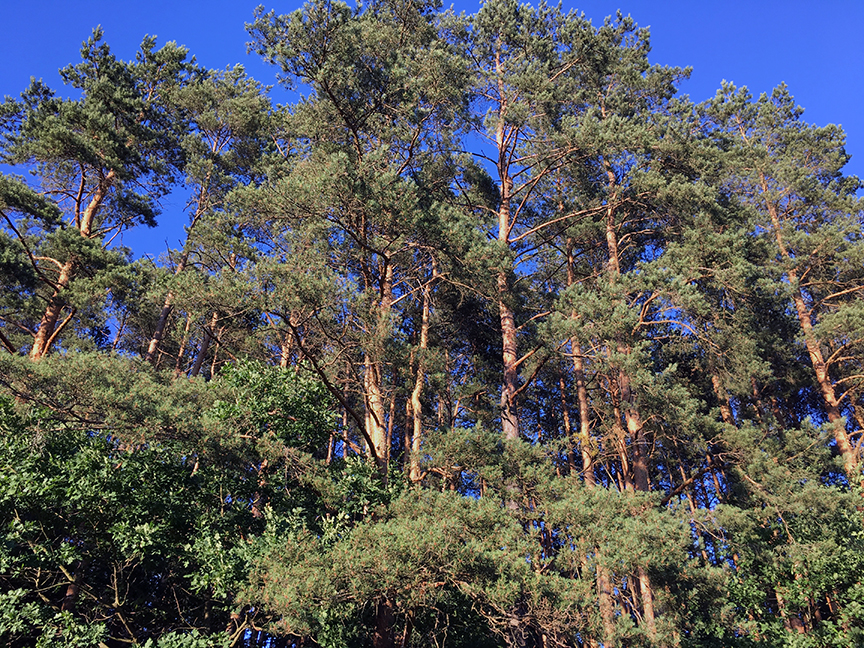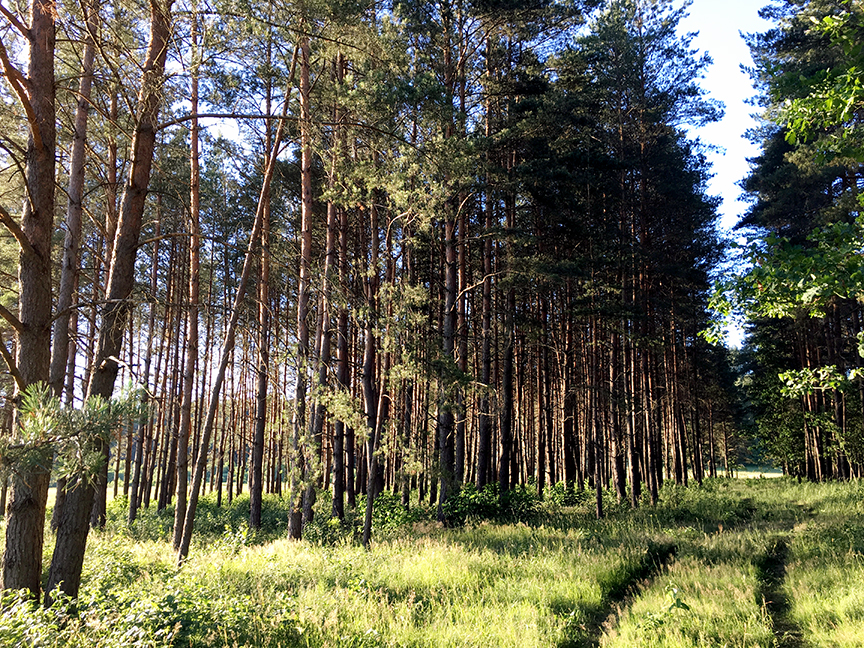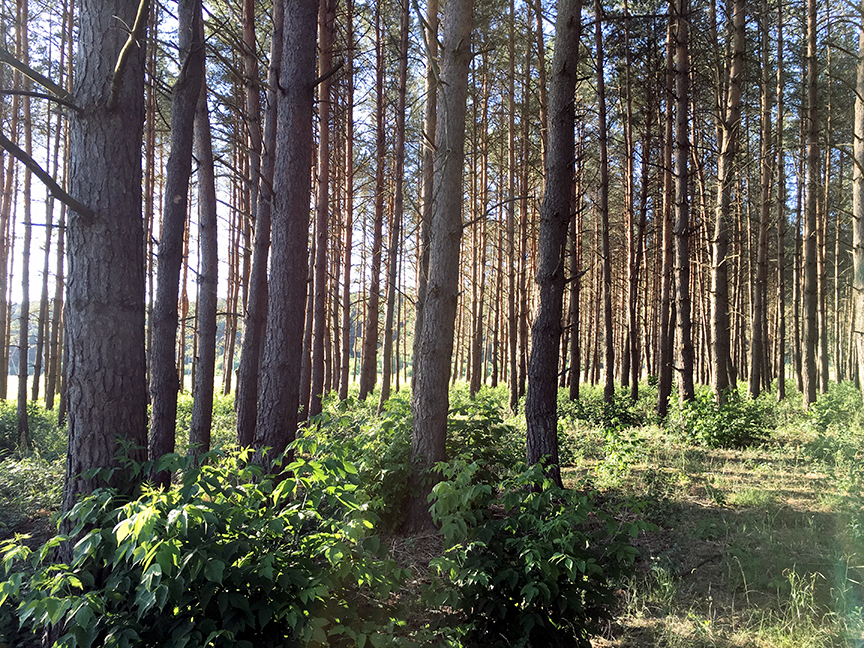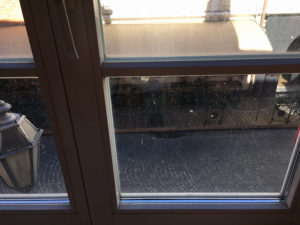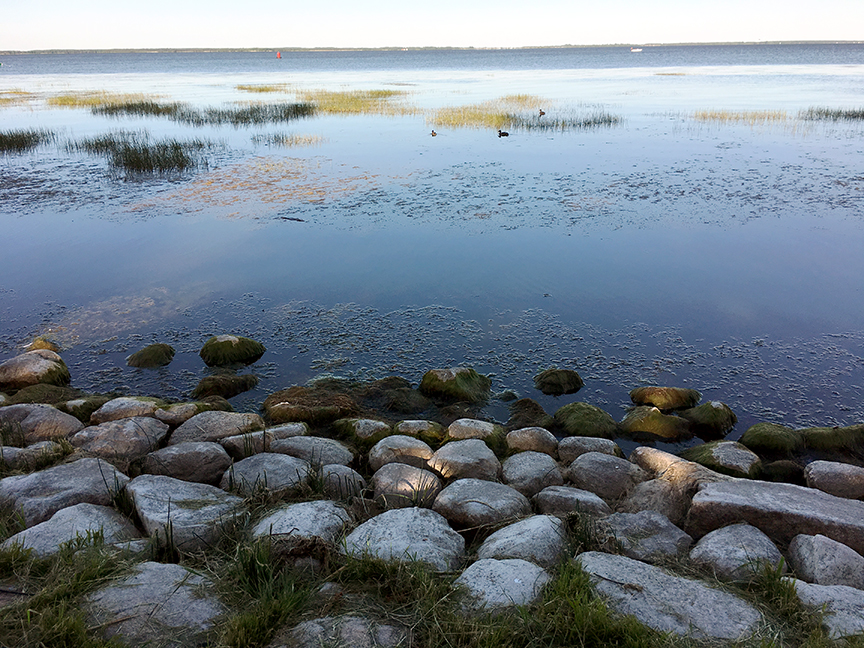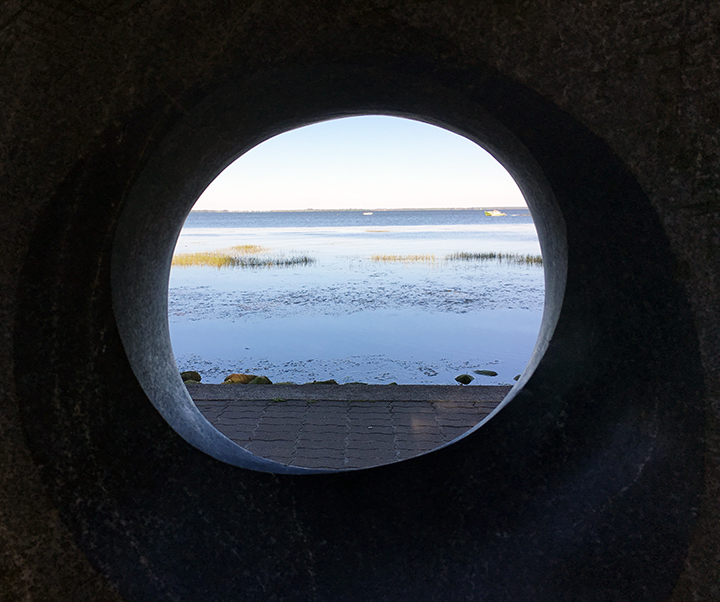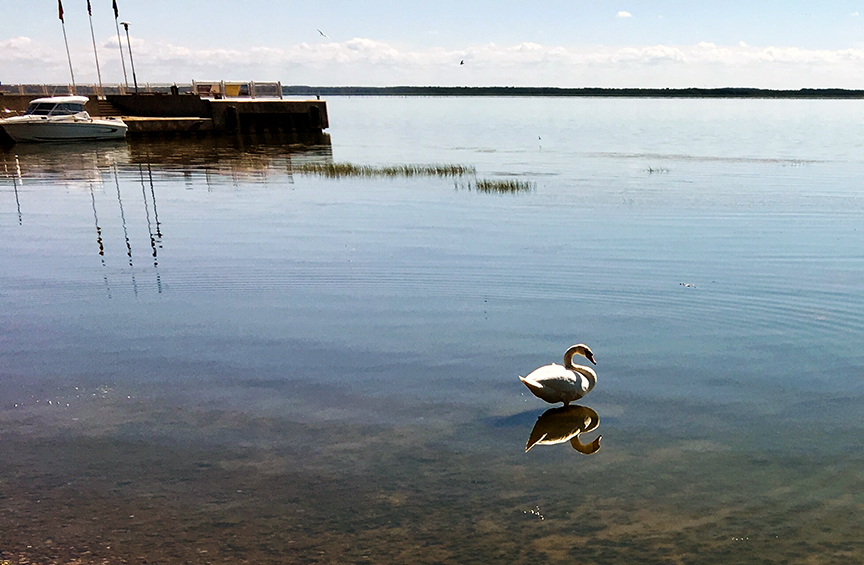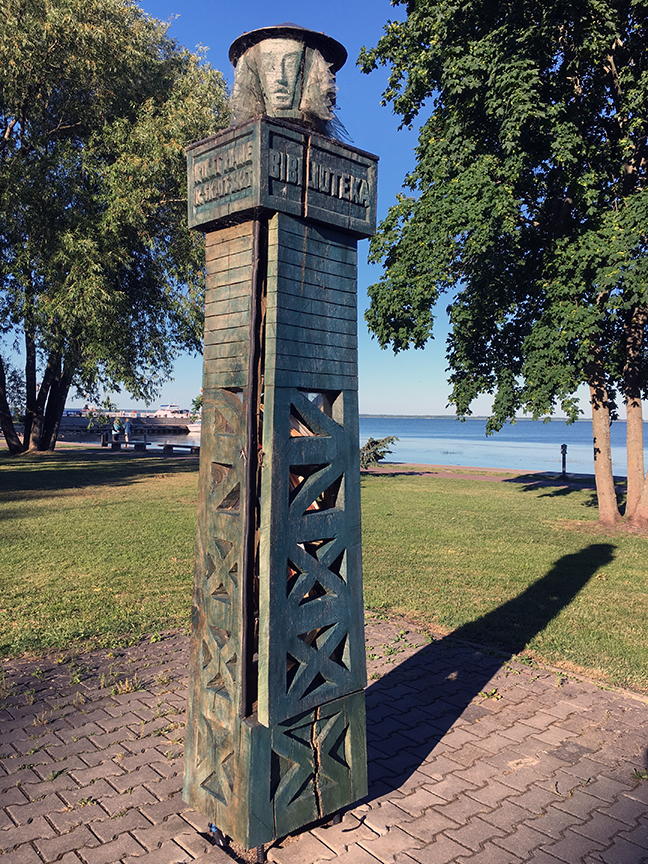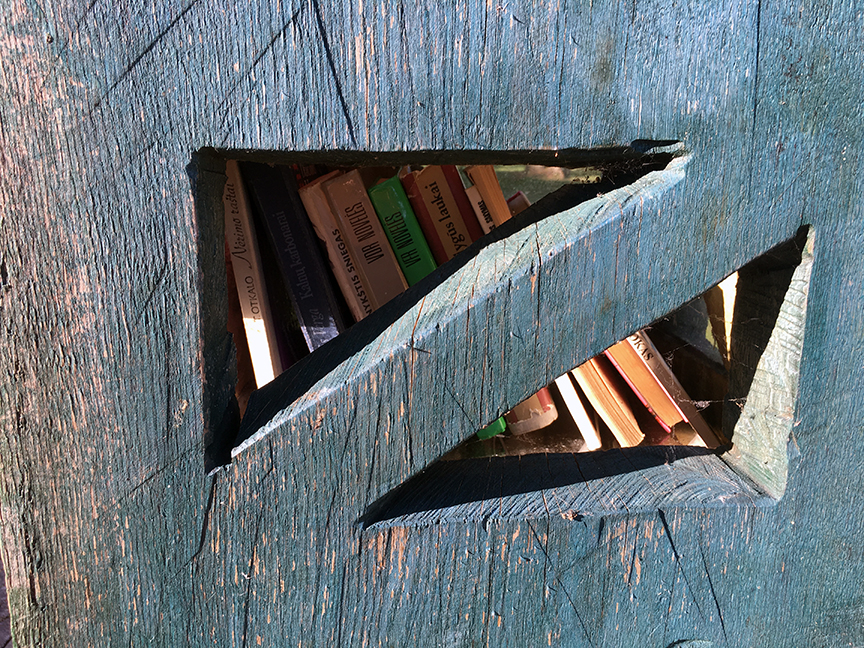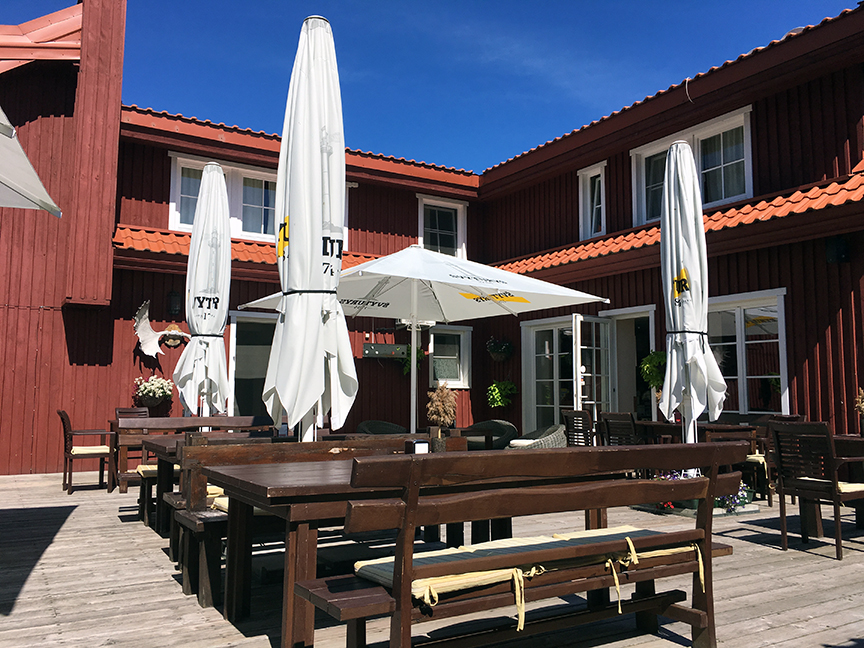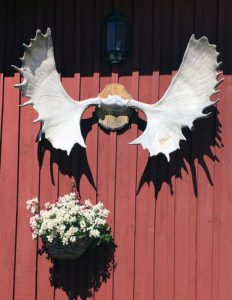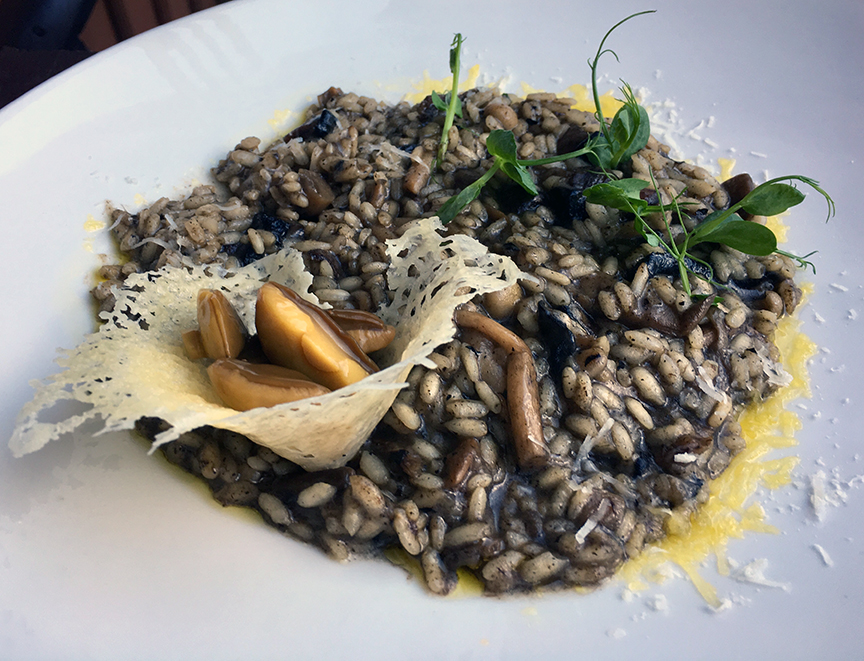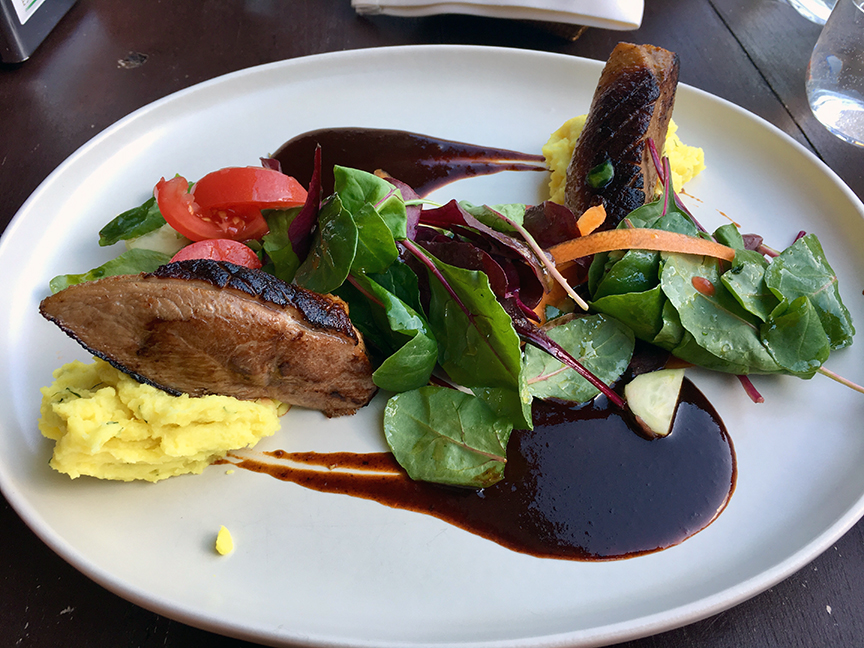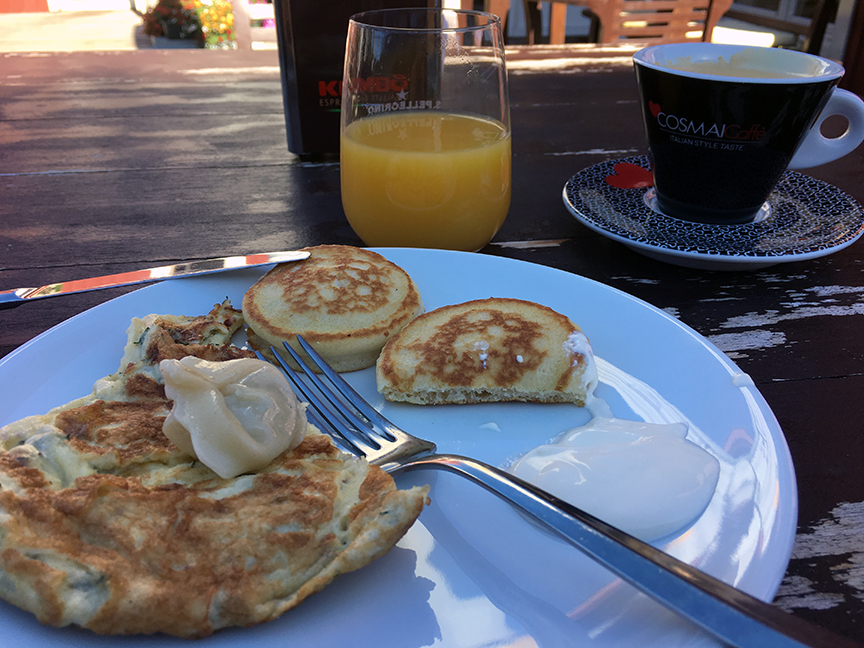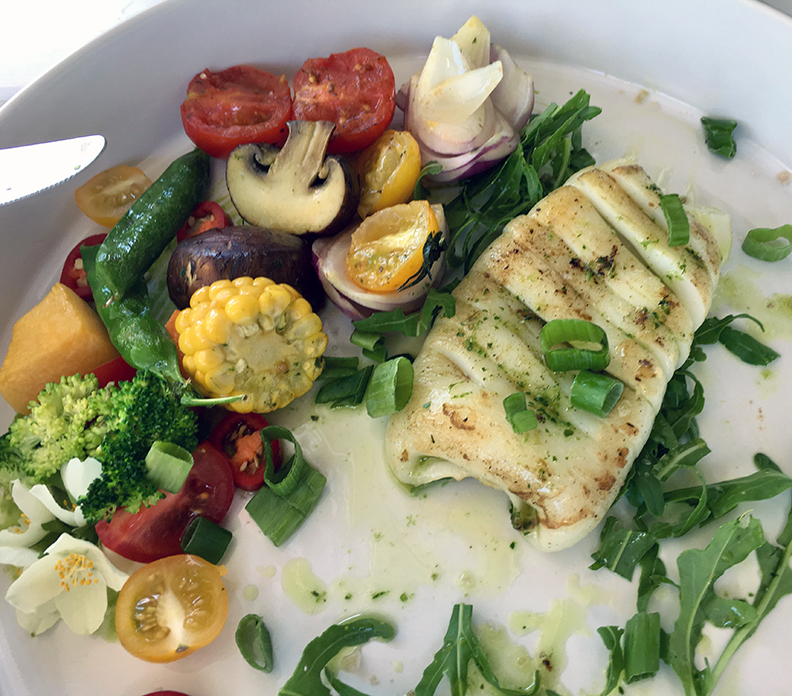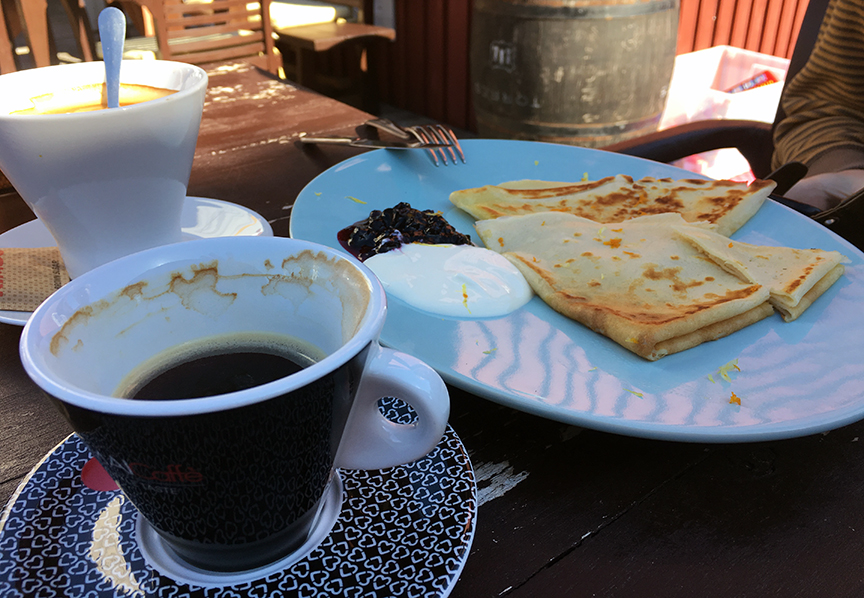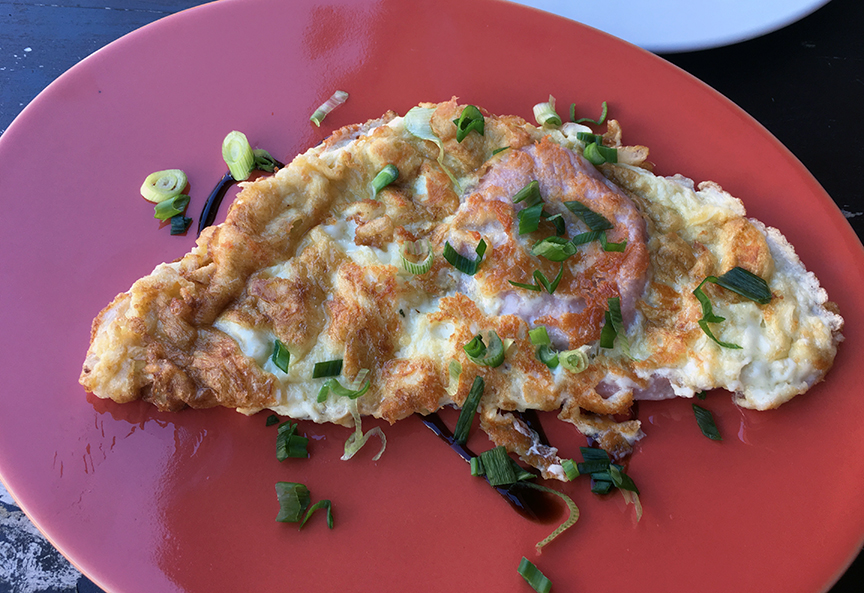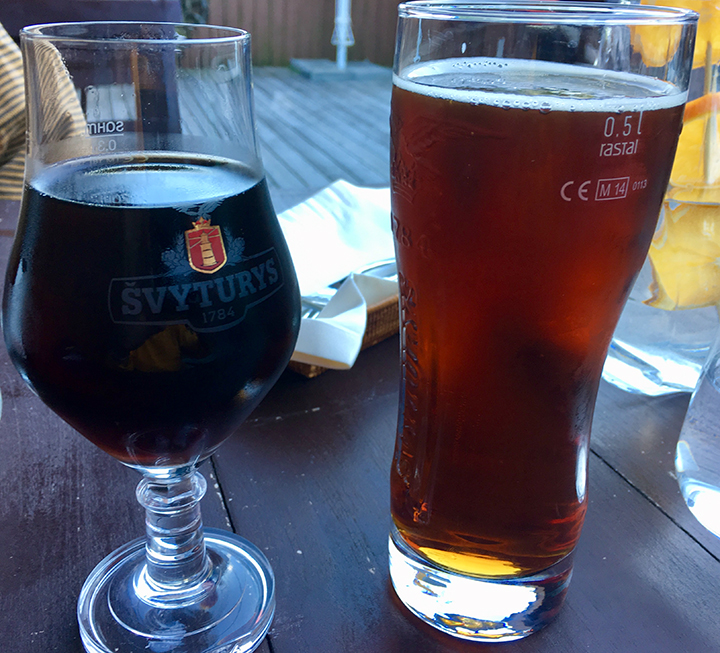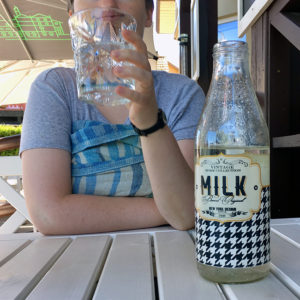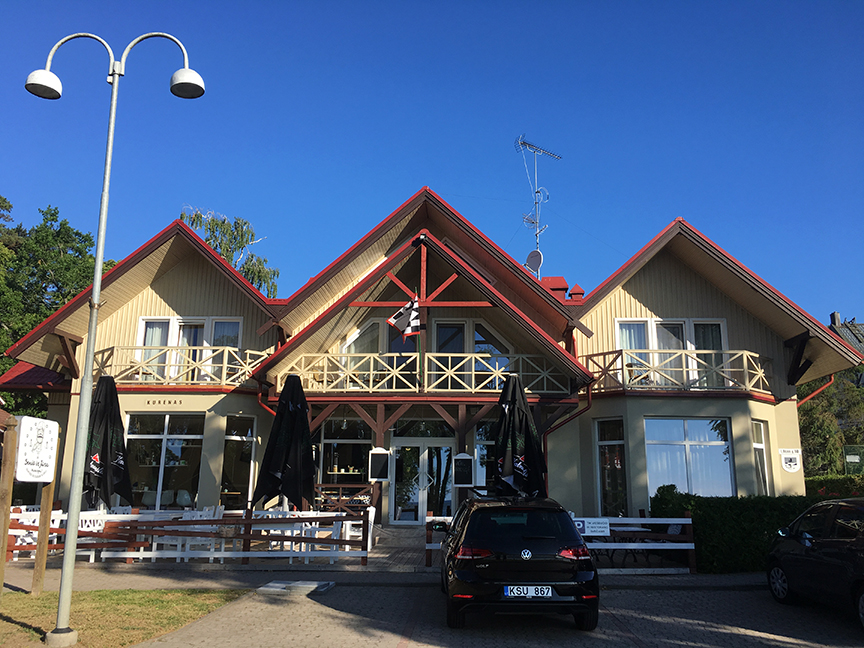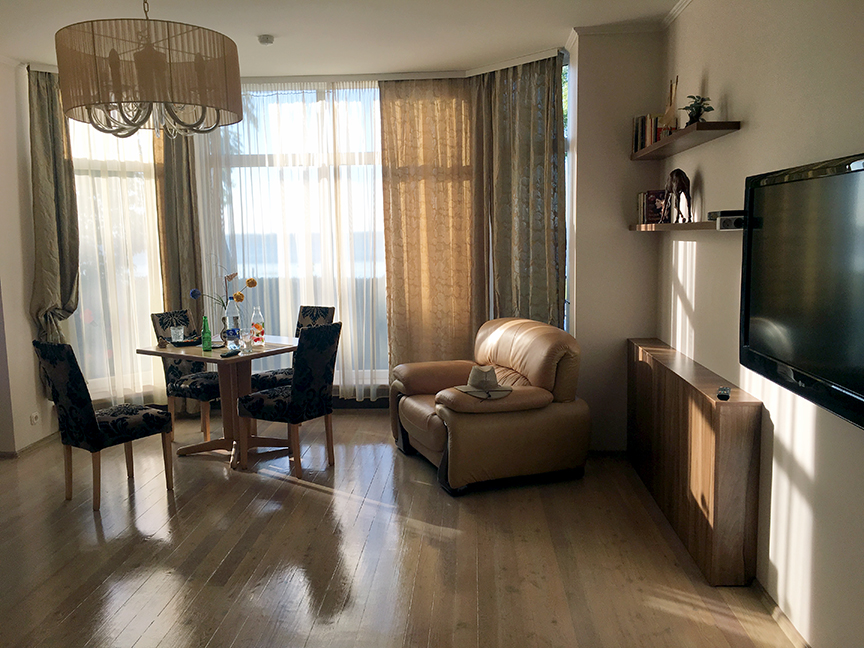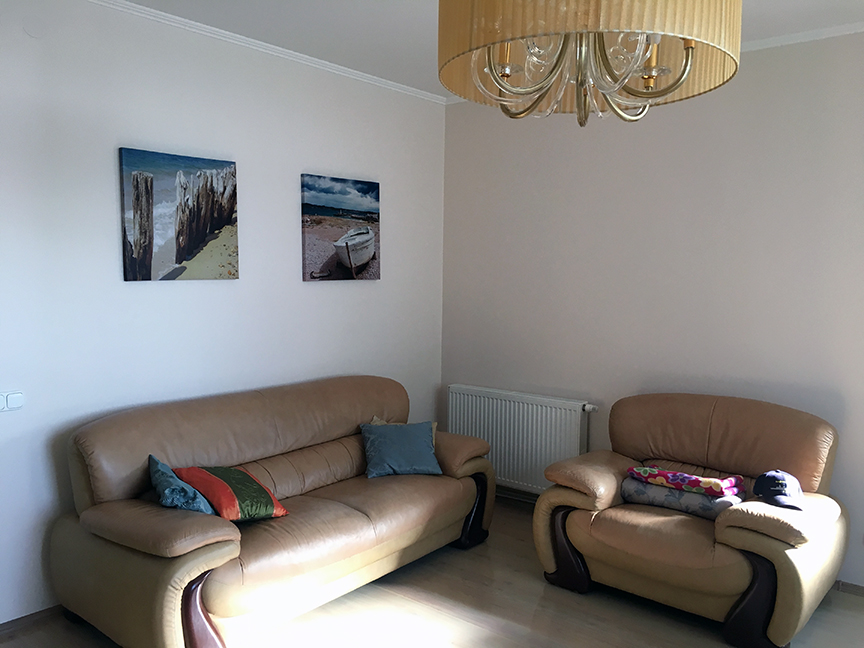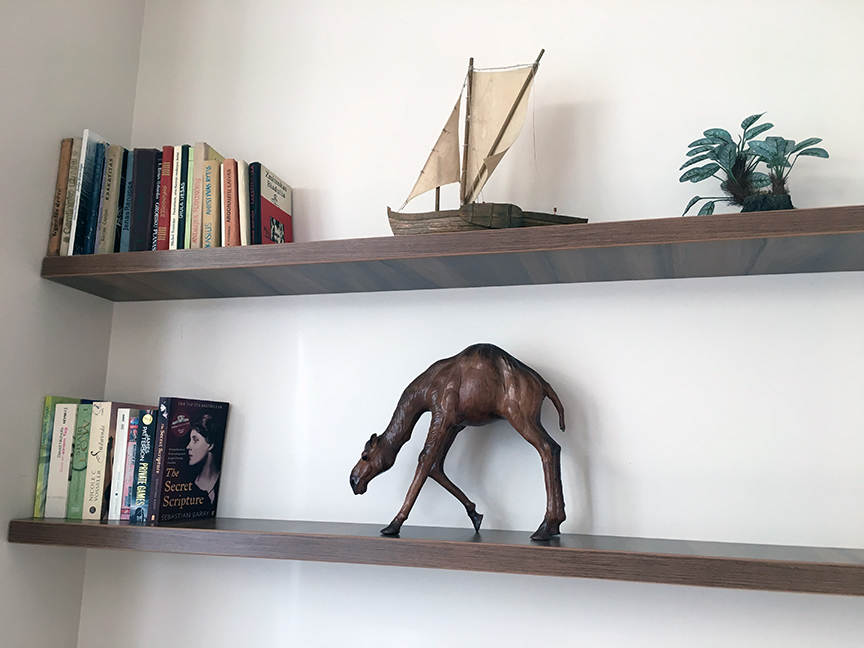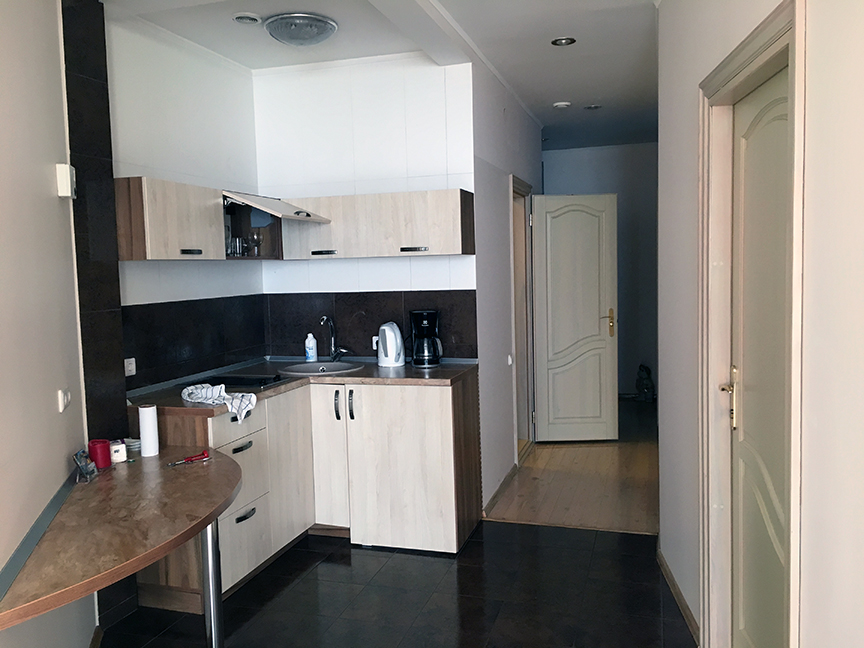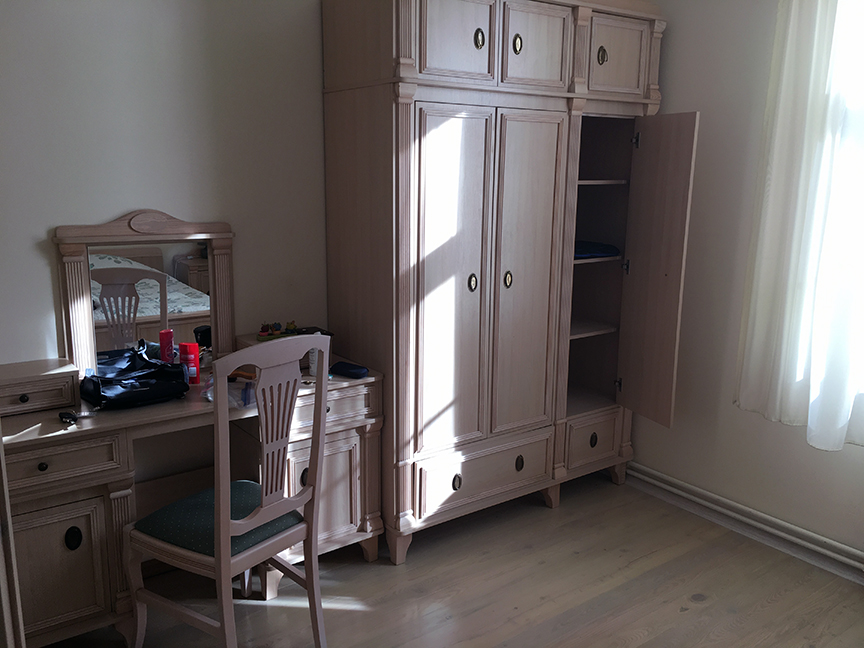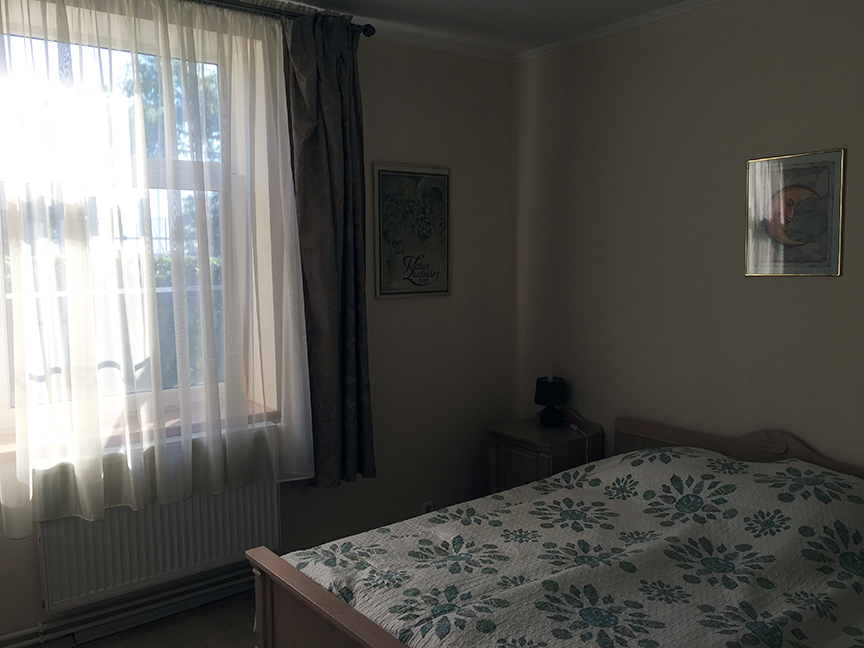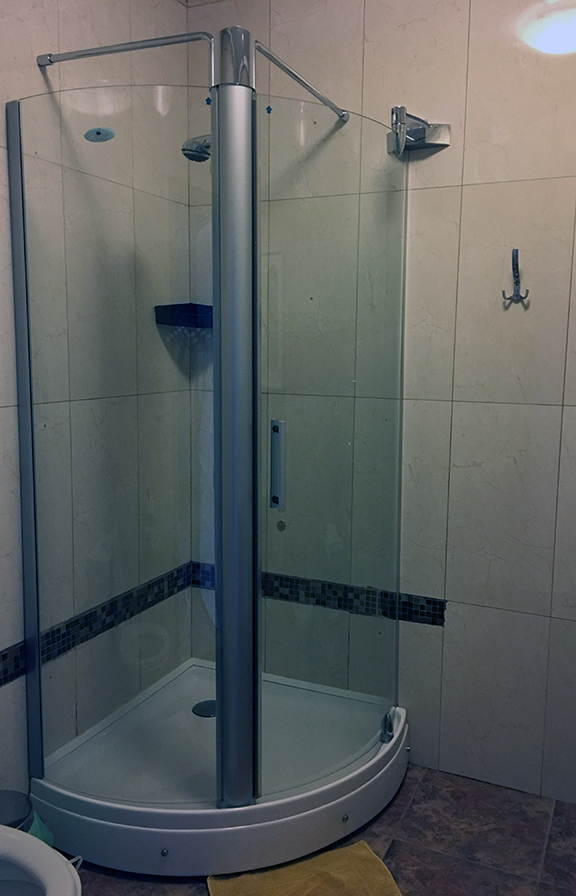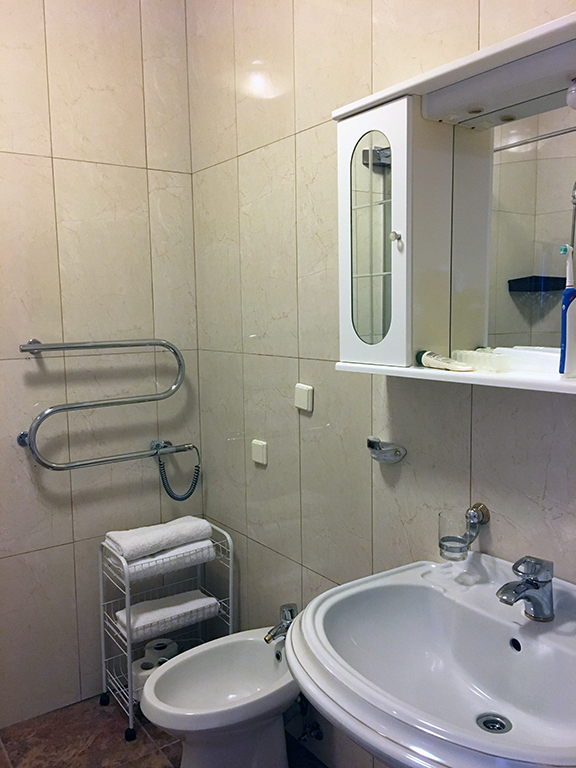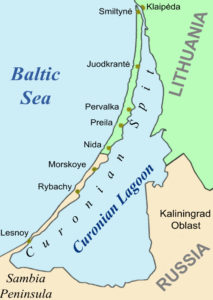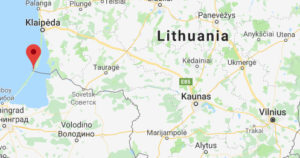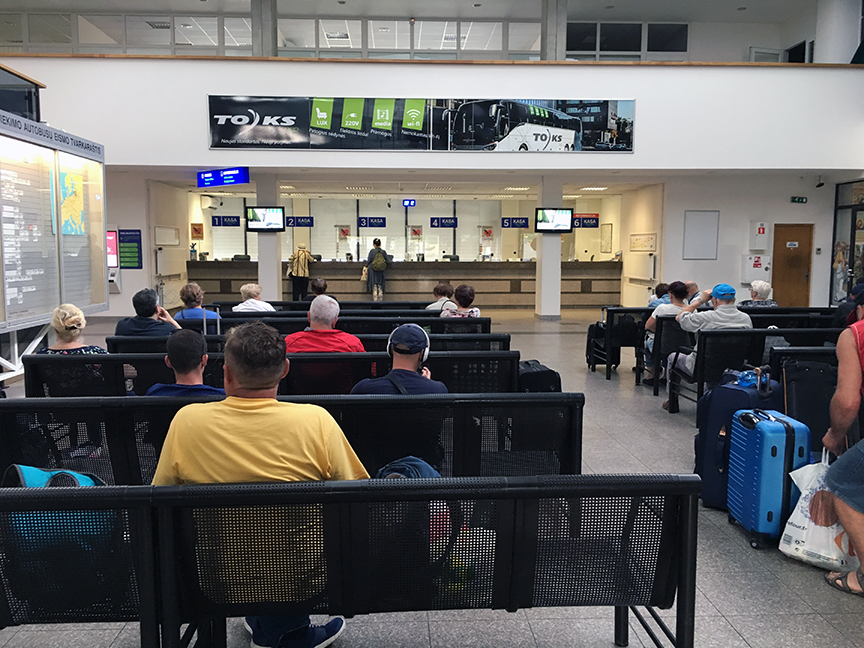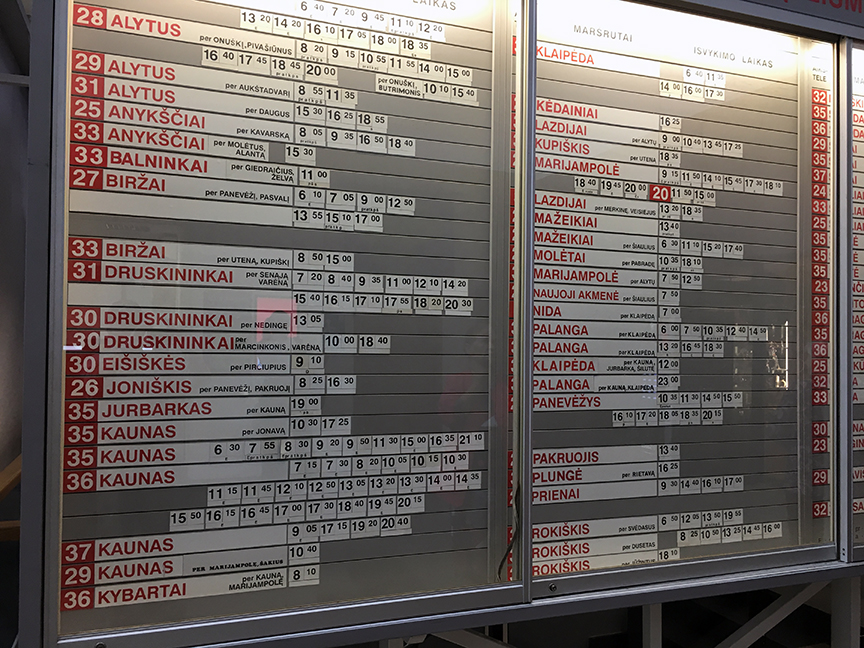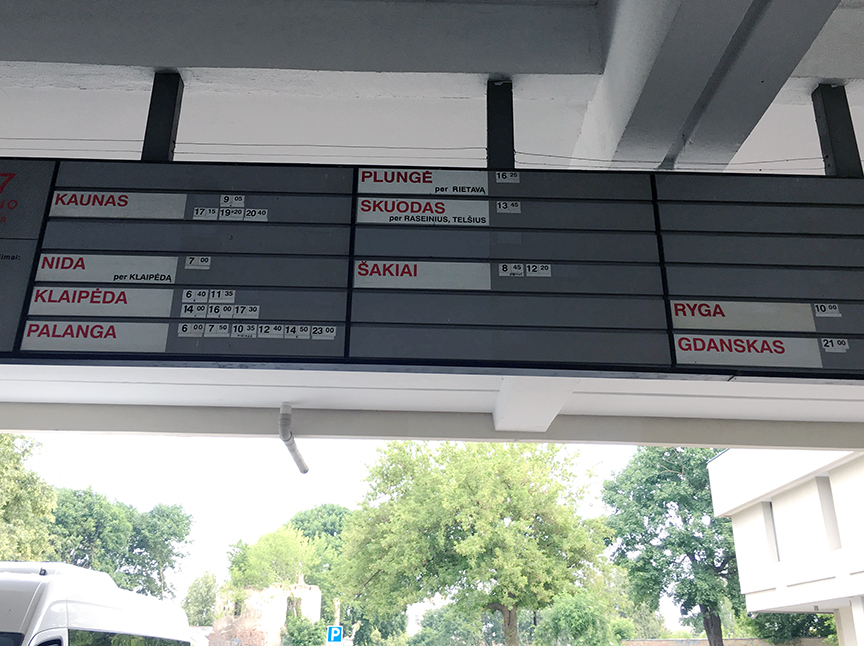Our last full day in Lithuania, 25 June, was spent back in Old Town Vilnius. Some additional sightseeing and gift-seeking.
Amber
A mandatory souvenir/gift was Baltic amber. “Amber” is ubiquitous in Old Town stores, but, as with “pieces of the Berlin Wall” at Checkpoint Charlie, their provenance is dubious. I certainly would not be able to discern true amber from colored glass.
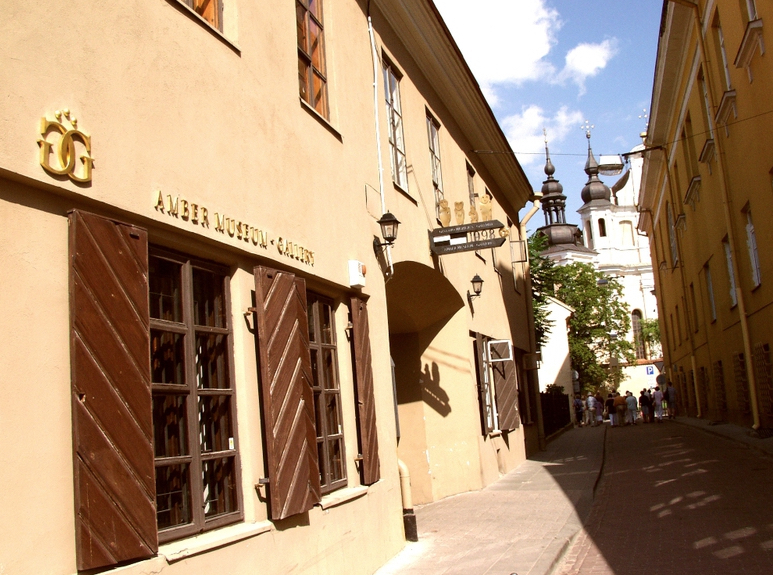
We decided to check out the Amber Museum-Gallery, which certifies each piece of amber in its collections. They did not permit photos or video in their gallery, but we visited their museum on a lower level of the building.
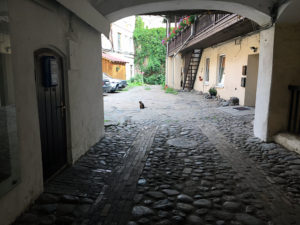
Located in a baroque-style house from the 17th century, the museum-gallery describes moving from the showroom on street level to the museum as transiting from the 21st century to surroundings of the 17th century and then to a “cultural layer” of the 14th-15th centuries.
A major part of the museum exhibit is a reconstruction of the “Treasure of Juodkrantė,” described as “the biggest archaeological amber collection in the world,” collected in the mid-19th century in the Curonian Spit town in which we had earlier spent a few days.
Amber, we learned, is not a stone, not a mineral. It is fossilized tree resin, which can burn and hold an electric charge. The Baltic states and nearby are major sources of amber. Most commonly yellowish-orange in color, amber can be found in a wide range of colors, including red, greenish, bluish, and even black. A small portion of amber contains insects or plant life trapped as the amber was formed.
One piece on display in the showroom was a masted sailing ship, more than a yard long and almost as tall, made up of large and small pieces of amber. I asked a sales clerk if it had a price. He chuckled and said, “Just think of what a top-level Mercedes might cost.”
We ended up with several much less expensive items . . . and some video (1:45).
Nearby was the Church of St. Anne, originally built in 1495-1500 and considered one of the best examples of Gothic architecture in Old Town.
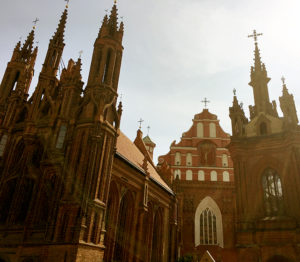
Gediminas’ Tower
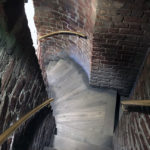
This tower is what remains of the Upper Castle in Vilnius. It provides the highest place from which to view the city, especially Old Town below.
Besides the view, the tower offers historic information and artifacts. It is a subdivision of the nearby National Museum. Access is by stairs or funicular railway. We rode. On one floor of the tower, excellent multimedia presentations provide images and history of the tower and surrounding area. A short segment of one is in the video (2:53).
National Museum
Okay, Lithuania’s National Museum is somewhat modest. Its displays represent the history of Lithuania, as well as traditional Lithuanian culture and customs. Here is video (2:40).

